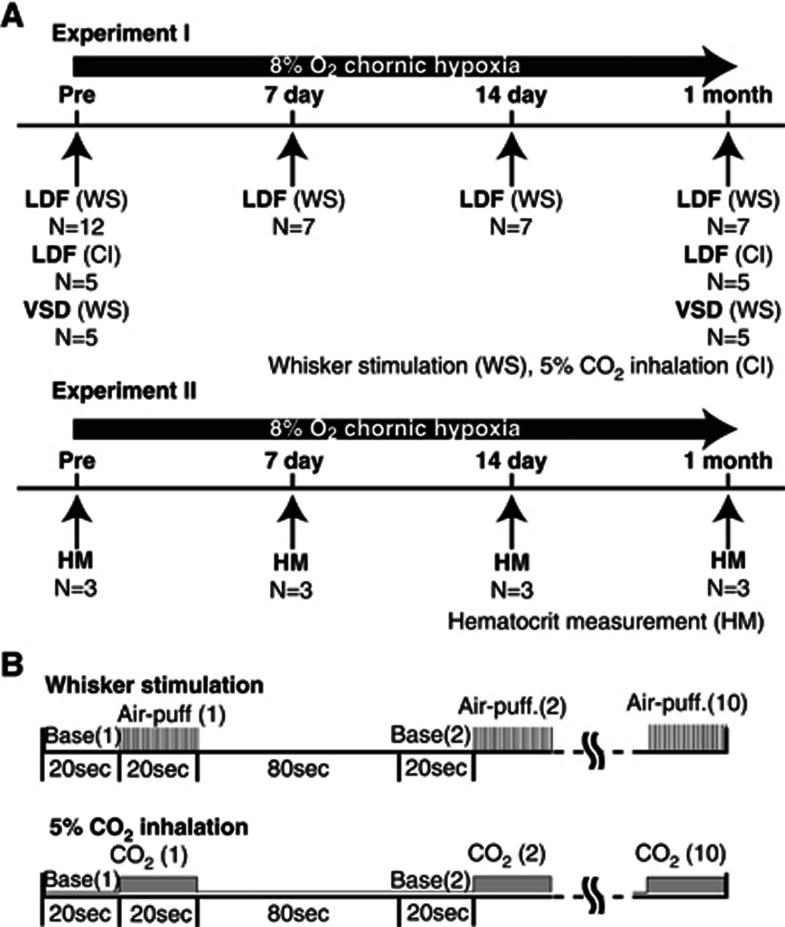Figure 1.
(A) Experiment I (laser-Doppler flowmetry (LDF) measurement and voltage-sensitive dye (VSD) imaging in awake animals) and experiment II (hematocrit measurement). LDF measurement during whisker stimulation was performed before (N=12) and 7 days (N=7), 14 days (N=7), and 1 month (N=7) after the start of chronic hypoxia. In five of these animals, LDF measurements during CO2 inhalation and VSD imaging during whisker stimulation were performed before and 1 month after chronic hypoxia. In experiment II, hematocrit measurement was performed in a total of 12 animals (each measurement used three animals) before, at 7 days and 14 days during, and 1 month after chronic hypoxia. Hematocrit was estimated with a blood analyzer (I-STAT; Abbott). (B) Experimental protocols of whisker stimulation and 5% CO2 inhalation. In whisker stimulation, 20 seconds of rectangular pulse air-puff stimulation (50-milliseconds pulse width and 100-milliseconds onset-to-onset interval, i.e., 10 Hz frequency) was given to the right whisker region of mice. Ten consecutive trials were repeated with an onset-to-onset interval of 120 seconds in each experiment. In CO2 inhalation, 5% CO2 gas was given to mice continuously for the same duration (20 seconds) and interval (120 seconds) as the sensory stimulation.

